 Download PDF
Download PDF
Name: Lathyrus venosus Muhl. ex Willd.
Family: Fabaceae, the Bean Family
Common Names: Purple vetchling, veiny pea, smooth veiny pea (vine), veiny vetchling, rough veiny vetchling, forest pea, and wild pea (1,2,5,7).
Etymology: Lathyrus is derived from the Greek Lathyros; the prefix la- meaning “very,” and suffix –thyros meaning “passionate”, and the name was originally given to an aphrodisiac pea; venosus means “veiny” (4).
Botanical synonyms: L. multiflorus Nutt. ex Torr. & A. Gray, L. oreophilus Wooton & Standl., L. rollandii Vict. & J. Rousseau, Orobus venosus P.J.Braun, and Vicia venosa (Willd. ex Link) Maxim. (accepted name according to TROPICOS) (1).
Quick Notable Features (4,8,13):
¬ Herbaceous plant with 4-angled stems
¬ Leaves with 8-14 ovate to elliptic leaflets, veins clear below, ending in a branched tendril
¬ Peduncles 1/2 to 2/3 as long as the subtending leaf
¬ Racemes of 5-30 purplish papilionaceous flowers
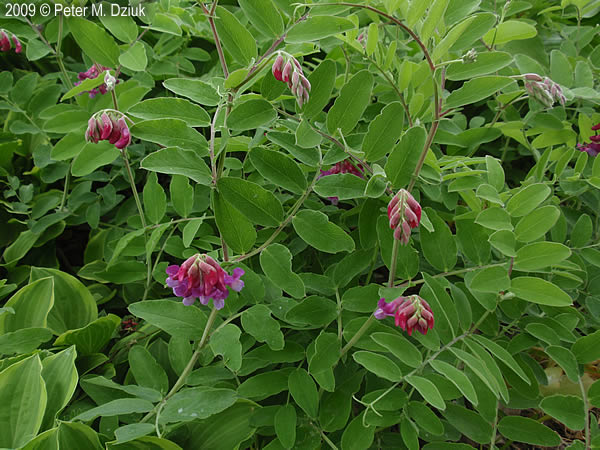
Plant Height: Stems of L. venosus can reach 2m in length and 0.5-1.5m tall (4,14).
Subspecies/varieties recognized (1):
L. venosus var. arkansanus Fassett
L. venosus var. californicus S. Watson
L. venosus var. grandiflorus Torr
L. venosus var. intonsus Butters & H. St. John
L. venosus var. meridionalis Butters & H. St. John
L. venosus var. obovatus Torr.
L. venosus var. venosus
L. venosus subsp. arkansanus (Fassett) C.L. Hitchc.
L. venosus subsp. venosus
Most Likely Confused with: Other species of Lathyrus, especially Lathyrus japonicus, L. ochroleucus, L. palustris, and species of Vicia.
Habitat Preference: The veiny pea grows in wet to dry habitats, including open sandy soils and deeply shaded forests. It is found in prairies, disturbed sites, woods, riverbanks, slopes, and shores (2,4,7,8).
Geographic Distribution in Michigan: L. venosus is present in about half of the counties in the southern half of the Lower Peninsula, Cheboygan, Menominee, Dickinson, and Keweenaw (2). According to Senn (1938), the specimens found in the Great Lakes region are L. venosus var. intonsus (10), and according to Fernald (1950), they are the typical form (4). 
Known Elevational Distribution: The veiny pea grows at 1066m above sea level in Virginia (Poor Mountain) (6,8).
Complete Geographic Distribution: Native to North America. In the United States, it is found in AK, AL, AR, DC, GA, IA, IL, IN, KY, LA, MD, MI, MN, MO, NC, ND, NJ, NM, NY, OH, OK, PA, SC, SD, TN, TX, VA, WI, and WV; and in Canada: AB, MB, ON, QC, and SK. L. venosus was collected once in Finland (5,6).
Vegetative Plant Description: The rhizotomous perennial L. venosus is usually 0.5-1.5m tall, about 0.4cm in diameter near the base, with the wingless stems ascending or decumbent. The stout stems are glabrous to finely pubescent, 4-angled, ridged, and striate. The stipules are smaller than the leaflets, 0.85-3.5cm long and 0.15-1cm broad, apically acute to acuminate, entire, and semi-sagittate. The petiole is 0.2-3cm long. The alternate, pinnately compound leaves are about 20cm long and 8-12cm broad, bear 8-14 leaflets, and end in a 3-4-branched tendril. The leaflets are lightly pubescent and veiny below, basally round, apically round to mucronate, ovate to elliptic, 1.5-6.5cm long and 1-3cm wide, and alternate on the rachis. The petiolules are slightly pubescent above (2,4,7,8,13,14).
Climbing Mechanism: L. venosus climbs using the tendril at the leaf apex (4).
Flower Description: The inflorescences of L. venosus are 5-30 flowered axillary racemes on pubescent peduncles, 8-17cm long. Each papilionaceous flower is perfect, 1.2-1.9cm long and ~1cm broad. The 5-parted calyx is glabrous or pubescent, 0.1-0.4cm long, with acute lobes. The two upper calyx lobes are short and converge, while the three lower lobes are linear-lanceolate. The corolla is divided into a clawed purple standard with darker veins, two free pale pink wing petals, and two fused clawed petals (the keel). The standard is 1.2-2.2cm long and 1-1.1cm broad, the wings are 1-1.1cm long and ~0.4cm broad, and the keel is 0.8-0.9cm long and curved upwards. The stamens are diadelphous, with 9 of 10 filaments united, all included. The superior ovary is linear and unilocular, with a style that is flattened and hairy on the inner side, curved upwards; the stigma 0.6cm long (4,8,10,13,14).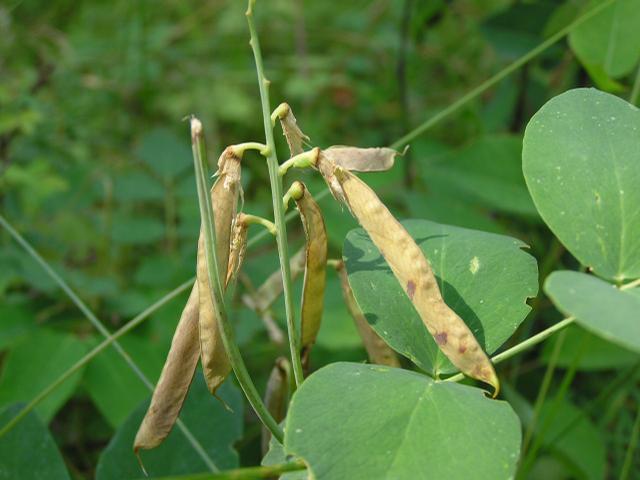
Flowering Time: May-July in Central and Northeastern U.S., and Canada (4,8).
Pollinator: Members of the genus Lathyrus are generally bee-pollinated. L. venosus is visited by honeybees (11,12).
Fruit Type and Description: The fruits are veiny legumes 2-6cm long and 0.5-0.7cm broad. They are sessile, flattened, membranaceous, dehiscent, bear many seeds, and are hairless (8,13,14).
Seed Description: The seeds of L. venosus are smooth, brown, occasionally mottled, with a light brown hilum. Each seed is 3-4.5mm long and 2-3.4mm broad, nearly spherical to slightly cubic (14, Image 5).
Dispersal Syndrome: The legumes are dehiscent, each valve coiling and exposing the seeds at maturity. The veiny pea is known to have little seed success and to reproduce vegetatively by rhizomes (8,10,14).
Distinguished by: L. pratensis, L. tuberosus, L. odoratus, L. hirsutus, L. latifolius, and L. sylvestris can be easily differentiated from L. venosus by the small number of leaflets: only 2. L. japonicus bears hastate stipules with 2 basal lobes, nearly the same size of the fleshy leaflets, while in L. venosus, the stipules are semi-sagittate (only one basal lobe) and clearly smaller than the thinner leaflets. L. ochroleucus has semi-cordate stipules, the leaves bear only 4-6 leaflets, and the inflorescence is less dense: only 5-10 yellowish-white flowers; L. venosus has 8-14 leaflets, and the dense inflorescence has 5-30 purple flowers. The stems of L. palustris are winged, wingless in L. venosus, additionally L. palustris leaves have 4-6 leaflets, and the inflorescence only bears 2-9 flowers. In Vicia ssp., the wing petals are adherent to the keel, in Lathyrus ssp. they are free. Additionally, most species of Vicia have leaflets < 1cm broad, while L. venosus leaflets are > 1cm broad. The stipules, usually a good character distinguishing among species of Vicia and Lathyrus, are similar between Vicia ssp. and Lathyrus venosus, thus their use is not advised (2,4).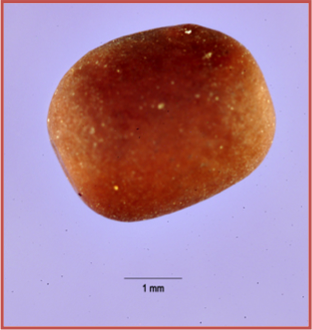
Other members of the family in Michigan (number species): Amorpha (2), Amphicarpaea (1), Anthyllis (1), Apios (1), Astragalus (3), Baptisia (3), Caragana (1), Cercis (1), Chamaecrista (2), Crotalaria (1), Cytisus (1), Dalea (2), Desmanthus (1), Desmodium (12), Galega (1), Gleditsia (1), Glycine (1), Gymnocladus (1), Hedysarum (1), Hylodesmum (2), Kummerowia (1), Lathyrus (9), Lespedeza (9), Lotus (1), Lupinus (3), Medicago (3), Melilotus (3), Mimosa (1), Orbexilum (1), Phaseolus (2), Pisum (1), Pueraria (1), Robinia (2), Securigera (1), Senna (2), Strophostyles (1), Tephrosia (1), Trifolium (10), Vicia (10), Vigna (1), Wisteria (2) (source 2).
Ethnobotanical Uses: The dried roots are considered a lucky charm. A yellow dye can be obtained from the flowers. A decoction or poultice of the roots is used as stimulant and tonic, and used to treat convulsions and internal bleeding (7). Some species of Lathyrus are edible, but because the genus also includes species that are toxic, be sure to double check edibility before consuming any part of a Lathyrus plant (16).
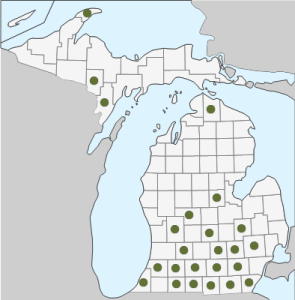 Phylogenetic Information: The genus Lathyrus is a member of the subfamily Faboideae in the Fabaceae family, which is in the order Fabales, part of the Rosids I, Core Eudicots. Members of the Fabaceae family are distributed worldwide, and the family contains approximately 9.4% of all eudicots and 16% of all known woody plants found in neotropical rainforests (3). L. venosus was included in the section Orobastrum of the genus Lathyrus together with L. nigrivalis, L. sphaericus, L. japonicus, L. palustris, L. ochroleucus, L. setifolius, and L. inconspicuus. They all have pinnate leaves ending on a branched tendril, are mostly weak climbers, and bear pistils that are barely enlarged near the apex (10).
Phylogenetic Information: The genus Lathyrus is a member of the subfamily Faboideae in the Fabaceae family, which is in the order Fabales, part of the Rosids I, Core Eudicots. Members of the Fabaceae family are distributed worldwide, and the family contains approximately 9.4% of all eudicots and 16% of all known woody plants found in neotropical rainforests (3). L. venosus was included in the section Orobastrum of the genus Lathyrus together with L. nigrivalis, L. sphaericus, L. japonicus, L. palustris, L. ochroleucus, L. setifolius, and L. inconspicuus. They all have pinnate leaves ending on a branched tendril, are mostly weak climbers, and bear pistils that are barely enlarged near the apex (10).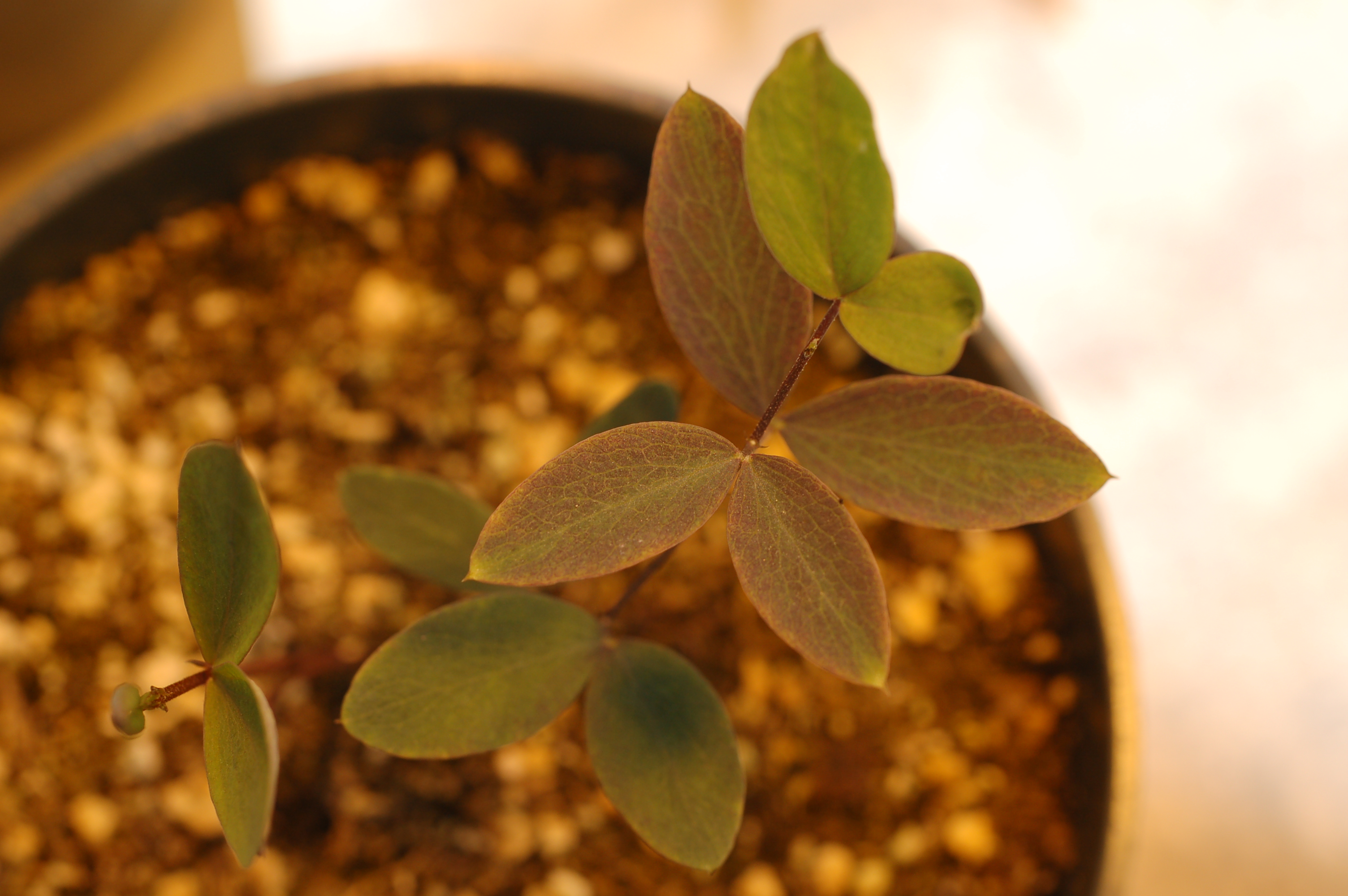
Interesting Quotation or Other Interesting Factoid not inserted above: L. venosus is considered threatened in Indiana, special concern in Kentucky, and endangered in New Jersey, New York, and Ohio (5). Field observations show that L. venosus has little seed set success (10). L. venosus, a natural tetraploid, has pollen fertility of 50-90%, but it most likely reproduces vegetatively, as most natural tetraploids do (9). L. venosus, like many members of the Fabaceae, has a symbiotic relationship with nodule forming bacteria that fixes atmospheric nitrogen in a form that is used by other plants, benefiting not only the host, but surrounding plants as well. Knops et al. (2000) determined that the lack of herbivory in an enclosed area of an oak-savanna increased the L. venosus population and total soil nitrogen (15).
Literature and websites used:
- Tropicos.org. Missouri Botanical Garden. 14 Feb 2013 <http://www.tropicos.org/Name/13021766>
- Michigan Flora Online. A.A. Reznicek, E.G. Voss, & B.S. Walters. February 2011. University of Michigan. Web. February 14, 2013. http://www.michiganflora.net/species.aspx?id=1315.
- Stevens, P.F. Angiosperm Phylogeny Website. Version 12, July 2012. http://www.mobot.org/mobot/research/apweb.
- Fernald, M.L. 1950. Gray’s Manual of Botany, 8th ed. New York: American Book Company.
- USDA, NRCS. 2013. The PLANTS Database (http://plants.usda.gov, 02/14/2013). National Plant Data Team, Greensboro, NC 27401-4901 USA.
- Gbif.org. Global Biodiversity Information Facility. http://data.gbif.org/occurrences/searchCountries.htm?c[0].s=20&c[0].p=0&c[0].o=5356511
- Robert W. Freckmann Herbarium Website. Accessed 15 February 2013. http://wisplants.uwsp.edu/scripts/detail.asp?SpCode=LATVEN
- Britton, N.L. & H.A. Brown 1970. An Illustrated Flora of the Northern United States and Canada: Volume II. New York, NY: Dover Publications, Inc.
- Khawaja, H.I.T., J. Sybenga, & J.R. Ellis 1997. Chromosome pairing and chiasma formation in autopolyploids of different Lathyrus species. Genome 40(6): 937-944.
- Senn, H.A. 1938. Experimental data for a revision of the genus Lathyrus. American Journal of Botany 25(2): 67-78.
- Badr, S.F. 2007. Karyotype Analysis and Chromosome Evolution in Species of Lathyrus (Fabaceae). Pakistan Journal of Biological Sciences 10: 49-56.
- Harker, D., G. Libby, K. Harker, S. Evans, & M. Evans 2010. Landscape Restoration Handbook, Second Edition. United States: CRC Press.
- Moss, E.H. & J.G. Packer 1983. Flora of Alberta: a manual of flowering plants, conifers, ferns, and fern allies found growing without cultivation in the province of Alberta, Canada. Toronto, Canada: University of Toronto Press.
- Reaume, T. 2009. 620 wild plants of North America: fully illustrated. Regina, Canada: CPRC Press.
- Knops, J.M.H., M.E. Ritchie, & D. Tilman 2000. Selective herbivory on a nitrogen fixing legume (Lathyrus venosus) influences productivity and ecosystem nitrogen pools in an oak savanna. Ecoscience 7(2): 166-174.
- Plants For A Future, 1996-2012. Accessed: 26 February 2013. http://www.pfaf.org/user/Plant.aspx?LatinName=Lathyrus+pratensis
Image Credits (all used with permission):
1. Image of stipule courtesy of Katy Chayka, Minnesota Wildflowers at http://www.minnesotawildflowers.info/flower/veiny-pea.
2. Image of plant habit courtesy of Peter M. Dziuk, Minnesota Wildflowers at http://www.minnesotawildflowers.info/flower/veiny-pea
3. Image of inflorescence courtesy of Marcie O’Connor, from www.aprairiehaven.com
4. Image of legume fruits courtesy of Robert Bielesch, at www.callutheran.edu/cr/foot/common/fhl-1892.htm
5. Image of seed courtesy of University of Wisconsin- Stevens Point, and the USA Agricultural Research Service
6. Species distribution map, derived from the Michigan Flora Online.
7. Image of seedling © Robyn J. Burnham.
Primary author: Cristine V. Santanna, with editing by John Bradtke and Robyn J. Burnham.
© Robyn J. Burnham
For additional information on Michigan Plant Diversity species accounts, please contact Robyn J. Burnham via email: rburnham“at”umich.edu